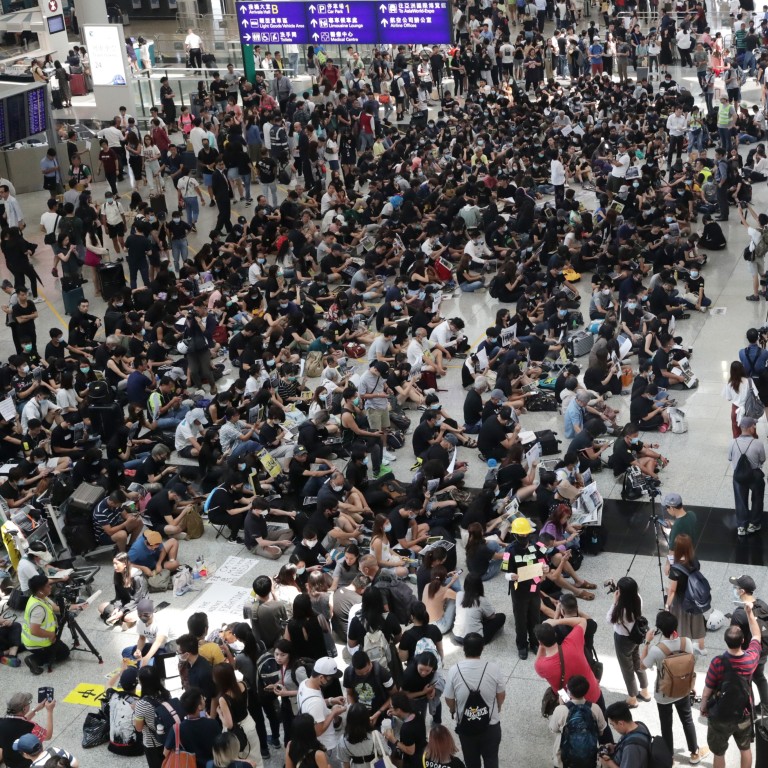
Hong Kong International Airport posts biggest monthly drop in travellers since 2009, with 851,000 fewer passengers in August amid anti-government protest crisis
- Airport handled 5.99 million passengers in August, a drop of 12.4 per cent compared to same month last year
- Decline was biggest drop since June 2009, which posted a fall of 18.9 per cent
Hong Kong International Airport suffered its biggest monthly drop in passengers in a decade, with a decline of 12.4 per cent – or at least 850,000 fewer travellers – in August as anti-government protests gripped the city, according to figures released on Sunday.
The Airport Authority said the steep drop in passengers came largely from China, Southeast Asia and Taiwan, all of which posted “significant declines”. Hong Kong reported a 40 per cent decrease in tourist arrivals in August.
The airport said it handled 5.99 million passengers in August, a drop of 851,000 travellers compared to the same month last year. The decline was the single biggest drop since June 2009, which posted a fall of 18.9 per cent.
In the past few months, there have been huge challenges to airport operations at times
“In the past few months, there have been huge challenges to airport operations at times,” said Ng Chi-kee, executive director of airport operations, in a press statement released on Sunday.
Cargo volumes also fell 11.5 per cent as global trade tensions and a weak global economic environment continued.
United Airlines, one of three major US carriers, further downsized its Hong Kong flights over the weekend, amid a decrease in demand during the citywide protests.
The Chicago-headquartered carrier has switched all flights over the winter to Hong Kong from New York Newark and San Francisco to its smallest Boeing 777-200 aircraft.
The downsizing, according to calculations by the Post, means the US carrier would offer 5,607 weekly seats to Hong Kong – based on a one-way calculation – a 25 per cent cut from the status quo, bigger than the 16 per cent capacity cut planned earlier.

Three weeks ago, United suspended its Chicago-Hong Kong flights indefinitely and moved forward the cancellation of Guam-Hong Kong service. The carrier in June added a second daily flight from San Francisco to Hong Kong.
Scott Kirby, the president of United, reportedly said the Hong Kong market was “terrible” in a room of investment analysts at a Morgan Stanley conference last week.
Qantas last month said it would cut its capacity to Hong Kong by 7 per cent by flying smaller planes.
The carriers announced an 11.3 per cent decline in passengers travelling in August compared to the previous year, including a 38 per cent slump in arrivals to the city. Hong Kong Airlines reported a 13 per cent decline in travel for August.
Cathay Pacific suspended Dublin flights over the winter, removed daytime flights to Paris and Frankfurt and trimmed the number of flights to Vancouver, New York JFK and Washington. Cathay Dragon suspended flights to Medan, Indonesia, and one daily flight each to Beijing and Tokyo.

